Sunday in Athens
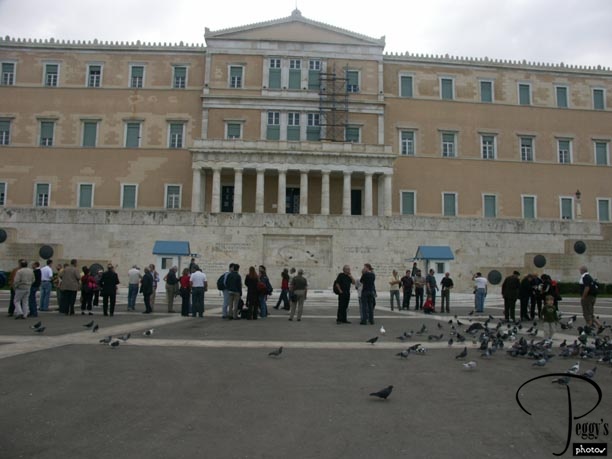
There are two main events in Athens on a Sunday: the special ceremony of the Changing of the Evzone Guards and the Monastiraki Flea Market. I walked from my hotel to Syntagma Square (about a 15–minute walk) to get a good viewing place to watch the special ceremony. However, I also got there in time to watch the every hour on the hour, seven days a week, regular Changing of the Evzone Guards. The guard changing is in front of the Tomb of the Unknown Soldier, which is in front of the Parliament Building.

Sunday in Athens
Evzone Guards
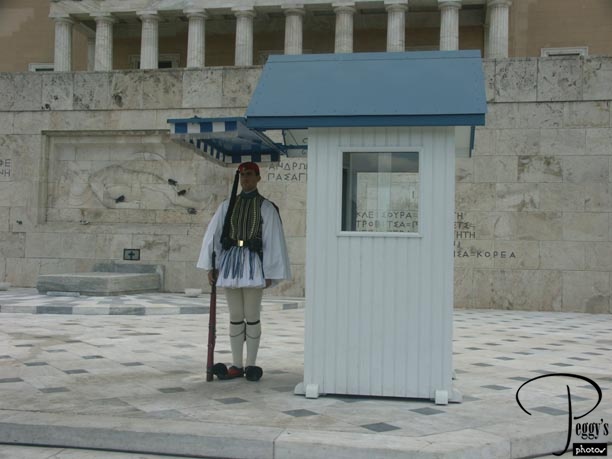
Evzone Guard on the side of one of the two gate houses. The Evzone Guards are a regiment of the regular Greek Army. Their elaborate uniforms go back to the Greek War of Independence in the 1820s against their Turkish occupiers. Greece was under the Ottoman Empire for four centuries. Bands of rebels, called kleftes (thieves) defeated the Turks and the klefte uniform was adapted for the Evzone Guards. The skirts are called foustanellas. The Evzone Guards have at least three uniforms of this type.

Evzone Guards
Evzone Guards
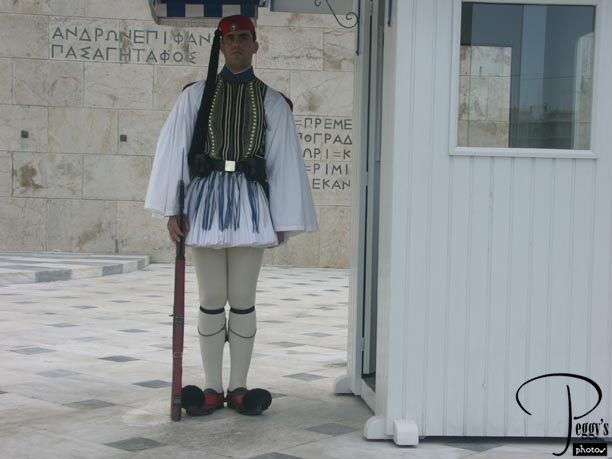
Closer–up photo of one of the Evzone Guards.

Evzone Guards
Evzone Guards
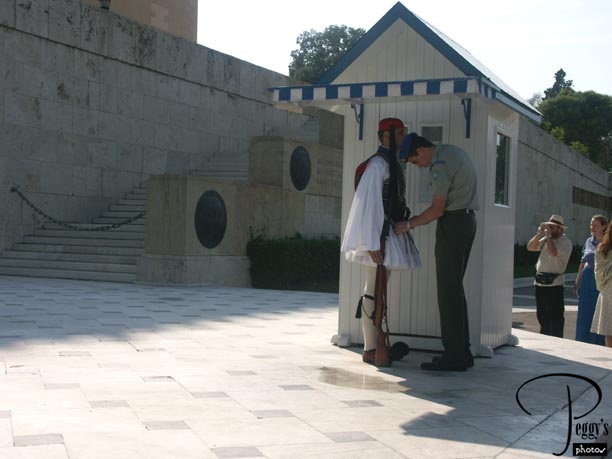
Every so often, this soldier would go over to one of the guards to make sure that everything on his uniform was hanging perfectly.

Evzone Guards
Tomb of the Unknown Soldier
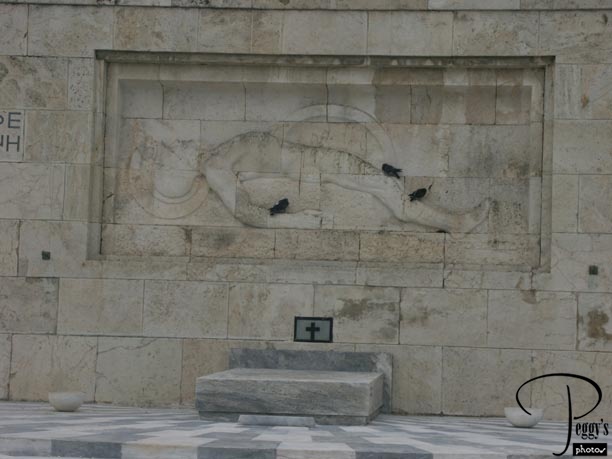
Close up of the Tomb of the Unknown Soldier. The relief shows a dying Greek hoplite warrior. The inscriptions are texts from Pericles’ funeral oration in 430 BC given in honor of Athenians who died in the Peloponnesian Wars.

Tomb of the Unknown Soldier
Evzone Guards
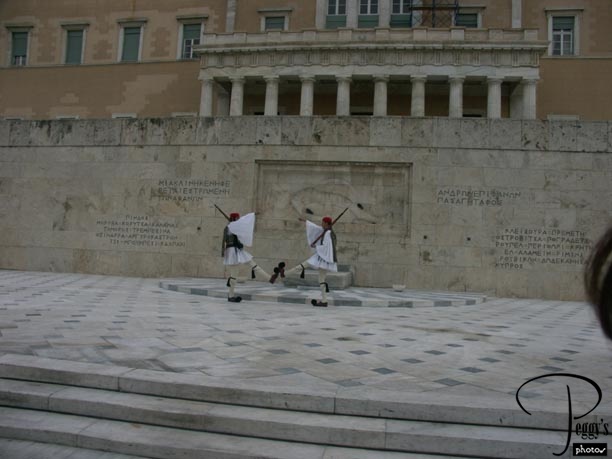
I have put a movie clip of the Changing of the Evzone Guards on this website: Go to Movies, Western Europe, Greece, “Changing of the Evzone Guards, Athens.” You’ll enjoy it! This photo shows some of the movements made by the guards.

Evzone Guards
Evzone Guards
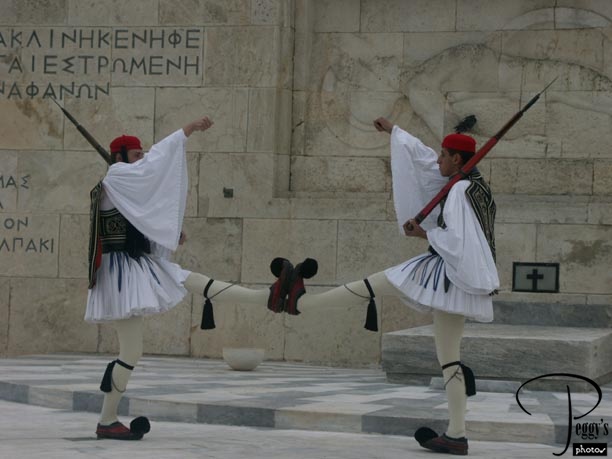
More of the movements of the guards.

Evzone Guards
Evzone Guards
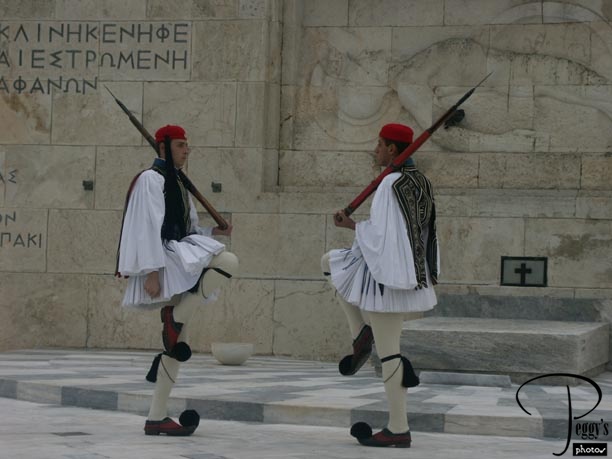
And more.

Evzone Guards
Evzone Guards
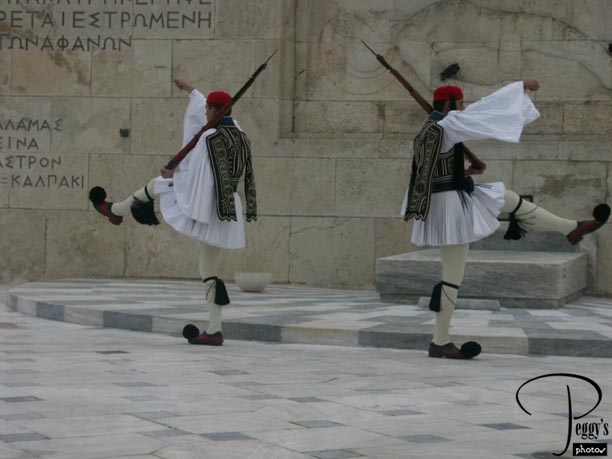
And another photo.

Evzone Guards
Evzone Guards Special Ceremony
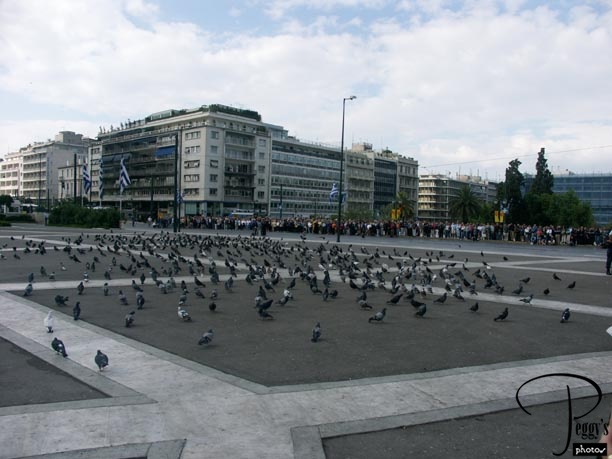
Waiting for the ceremony. A huge crowd had gathered to see the ceremony and the police kept pushing the crowd back. I had some difficulty keeping in the front of the crowd, but I held my ground and was able to take a movie clip of the ceremony: Go to Movies, Western Europe, Greece, “Special Evzone Guards Ceremony, Athens.” In the movie clip, note a stray Athens dog trying to get into the action.

Evzone Guards Special Ceremony
Evzone Guards Ceremony
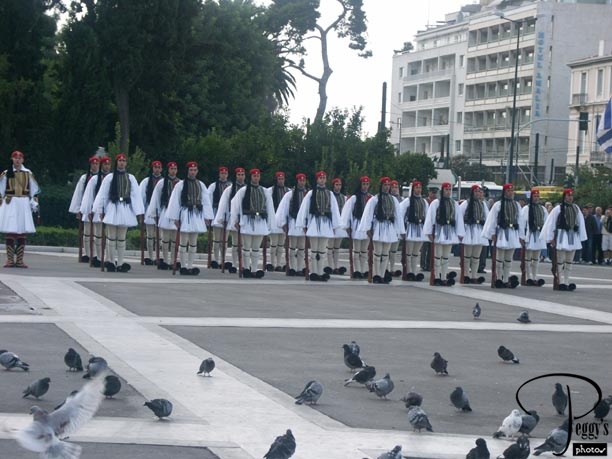
The Evzone Guards lined up.

Evzone Guards Ceremony
Evzone Guards Ceremony
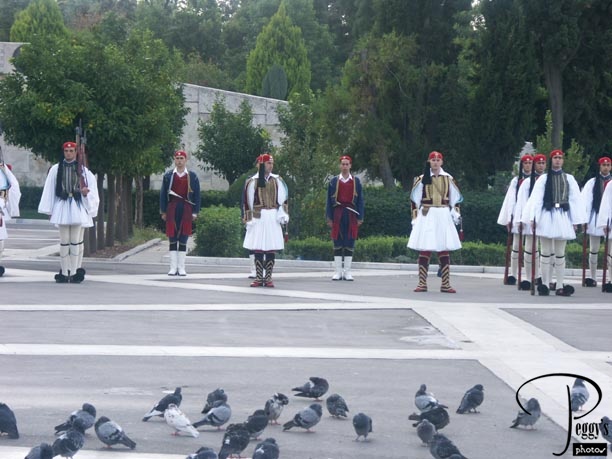
The special Evzone Guards.

Evzone Guards Ceremony
Evzone Guards Ceremony
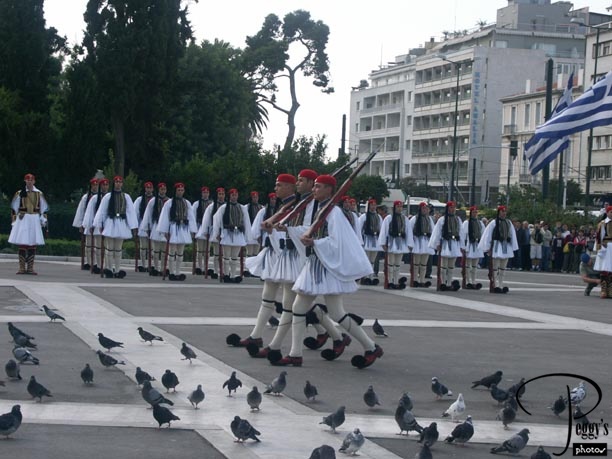
The Evzone Guards repeating the hour–on–the–hour Changing of the Guards.

Evzone Guards Ceremony
Evzone Guards Ceremony
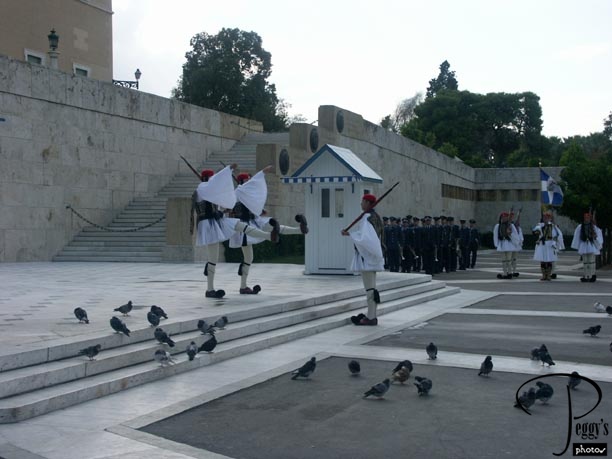
Changing of the Evzone Guards.

Evzone Guards Ceremony
Laying of the Wreaths
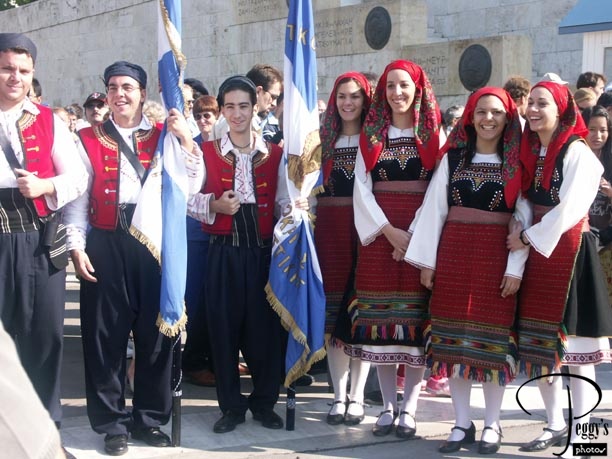
After the Changing of the Guards ceremony, various dignitaries brought wreaths for the girls in this photo to place on the Tomb of the Unknown Soldier. Another band came into the square, but the crowd had also moved into the square and I was not in a good position to take a movie.

Laying of the Wreaths
Tomb of the Unknown Soldier
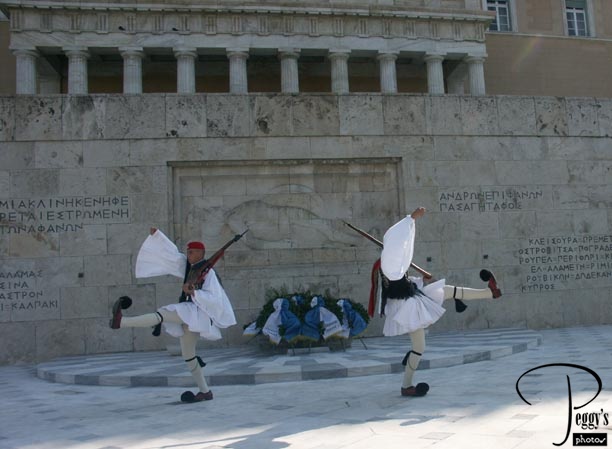
Wreaths laid on the Tomb of the Unknown Soldier and new guards on duty.

Tomb of the Unknown Soldier
On the Way to the Monastiraki Flea Market
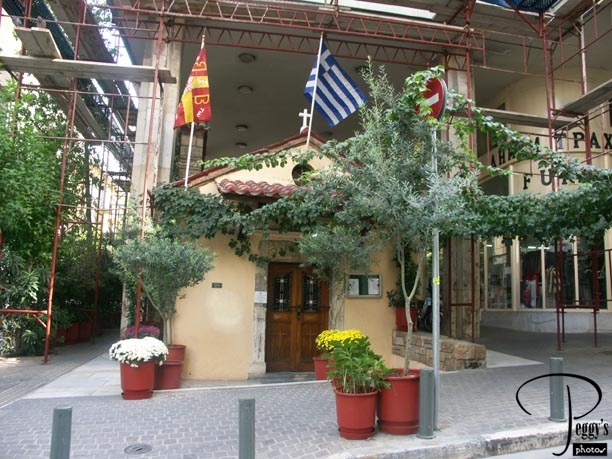
There was no better way that I could have spent this Sunday morning than watching the Evzone Guards’ ceremonies. But, now, onto the other big Sunday Athens event––the Monastiraki Flea Market. With one of my Athens maps in hand, and also by following the crowd, I successfully found the Flea Market. I passed some interesting sights on my way there. This little chapel is dwarfed by the high rise building on its side. You do see chapels and churches in Greece in the oddest places.

On the Way to the Monastiraki Flea Market
Athens Cathedral
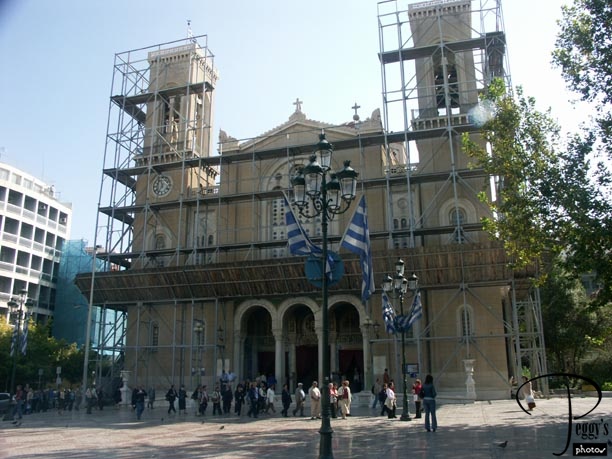
Athens Cathedral was built in the 2nd half of the 19th century. It is also called the Mitropoli.

Athens Cathedral
Athens Cathedral
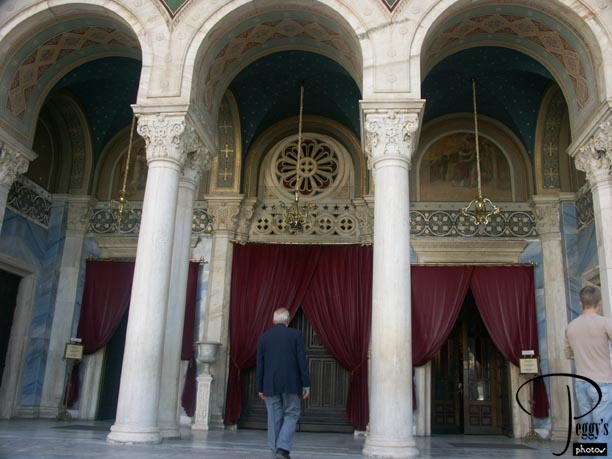
There was a mass going on in the church so I didn’t enter it. But here is a photo of its entrance.

Athens Cathedral
Athens Cathedral
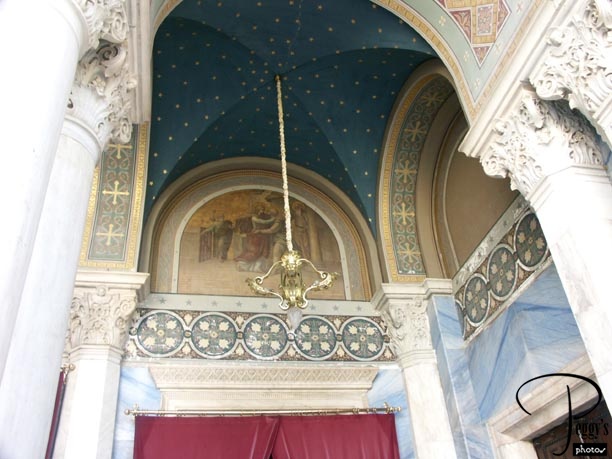
Close–up of its entrance.

Athens Cathedral
Statue in Plateia Mitropoleos
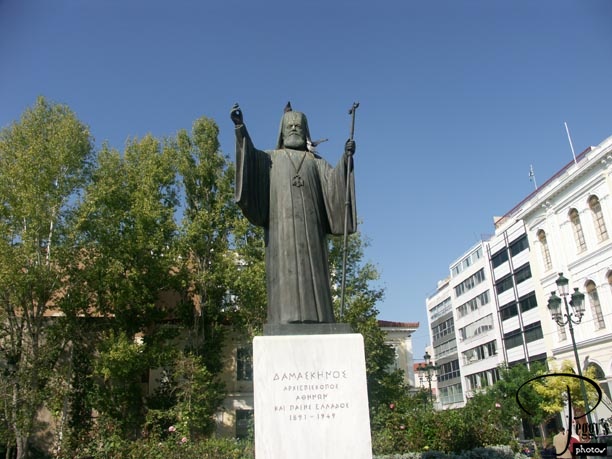
This statue of a Greek Orthodox priest was in Plateia (square) Mitropoleos facing the Athens Cathedral. Its nameplate was in Greek only, so I do not know the name of the priest.

Statue in Plateia Mitropoleos
Panagia Gorgoepikoos
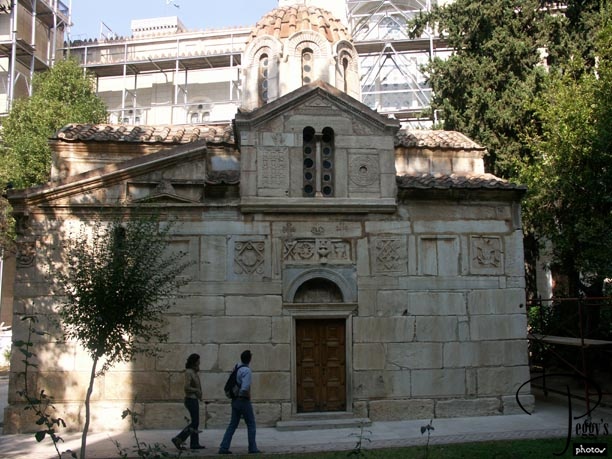
This church is located right next to the Athens Cathedral and is also called the Mikri Mitropoli (Little Cathedral). It was built in the 12th century entirely from Pentelic marble. It is dedicated to Panagia Gorgoepikoos, the Madonna Who Swiftly Hears, and also to Agios Eleftherios, the saint who protects women in childbirth. Its friezes and bar reliefs were taken from earlier buildings.

Panagia Gorgoepikoos
Panagia Gorgoepikoos
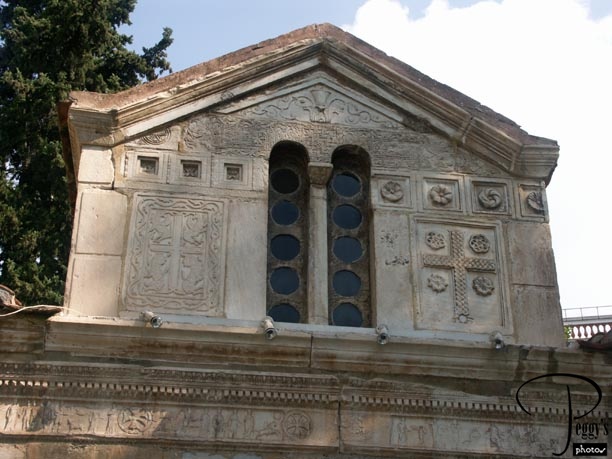
Some of the outside stonework.

Panagia Gorgoepikoos
Panagia Gorgoepikoos
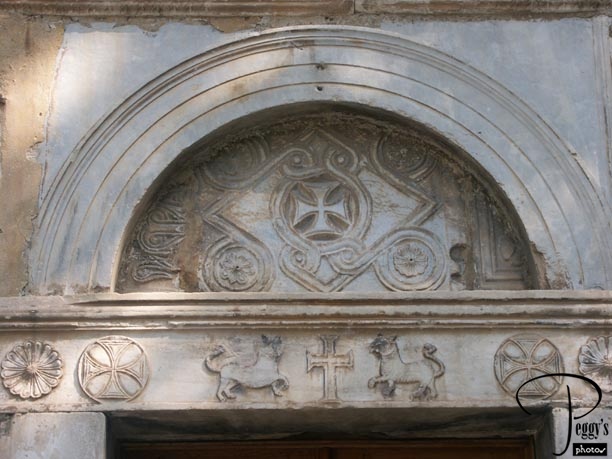
More of the stonework.

Panagia Gorgoepikoos
Panagia Gorgoepikoos
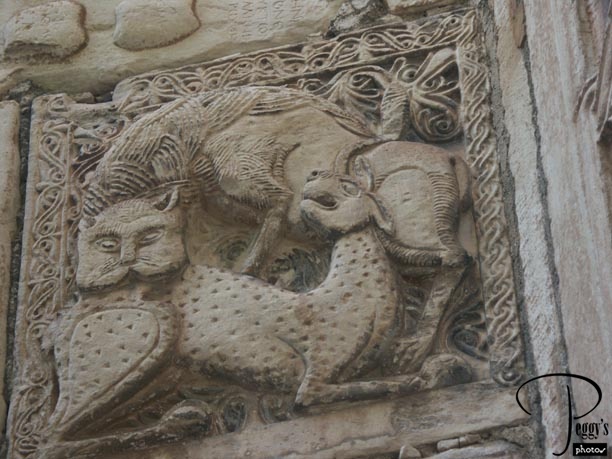
More of the stonework.

Panagia Gorgoepikoos
Panagia Gorgoepikoos
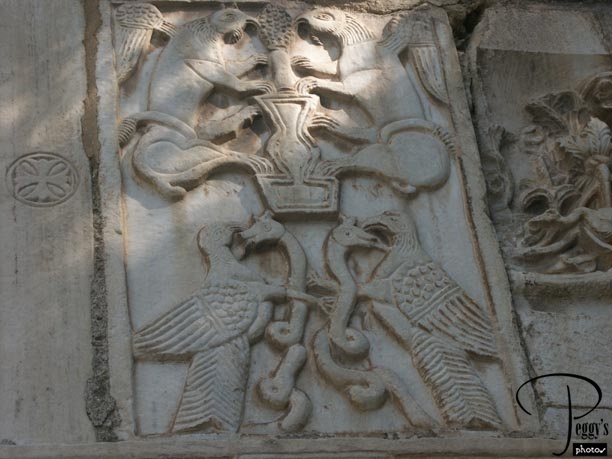
And more.

Panagia Gorgoepikoos
Plateia Monastirakou
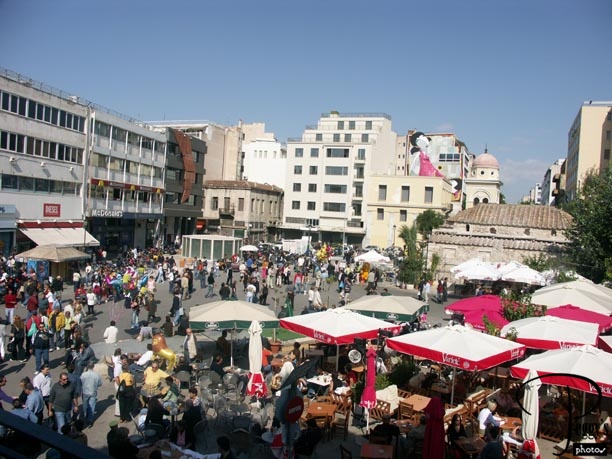
This is the main square in a section of Athens named Monastiraki, which is at the entrance to the Monastiraki Flea Market. There is a McDonald’s here and both a church and a mosque. The church is on the right of the photo.

Plateia Monastirakou
Pantanassa Church
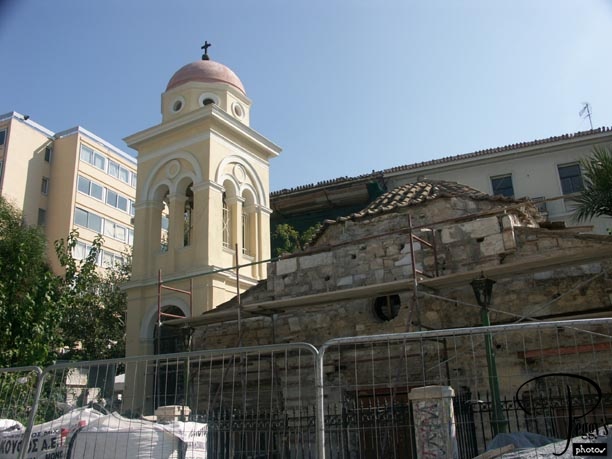
Pantanassa Church is also called the Little Monastery (Monastiraki)––hence, where the section Monastiraki got its name. It was originally built in the 10the century and then rebuilt in 1678 as part of a large convent. All that remains of the convent is the church.

Pantanassa Church
For Sale in Plateia Monastirakou
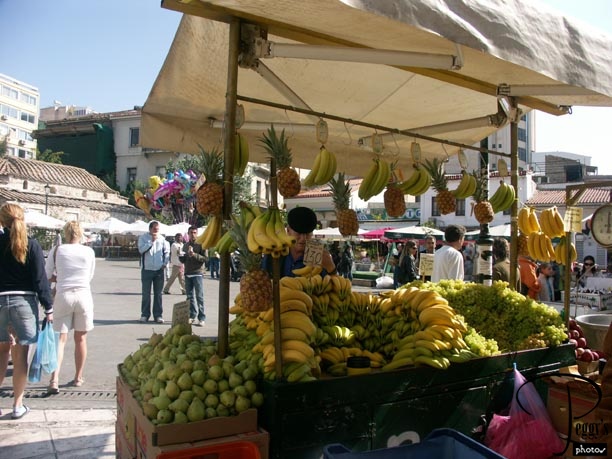
Fruit vendor.

For Sale in Plateia Monastirakou
For Sale in Plateia Monastirakou
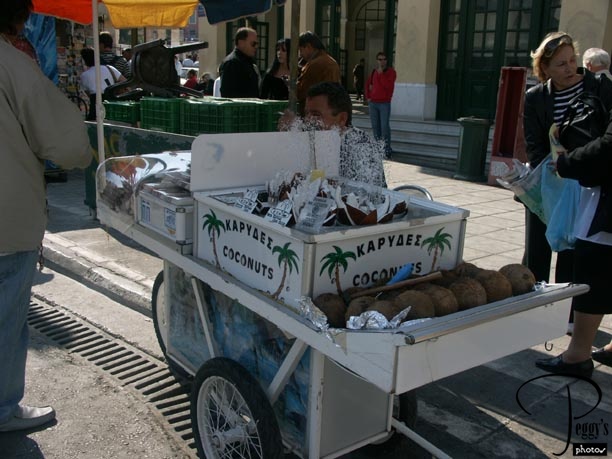
Coconuts.

For Sale in Plateia Monastirakou
For Sale in Plateia Monastirakou
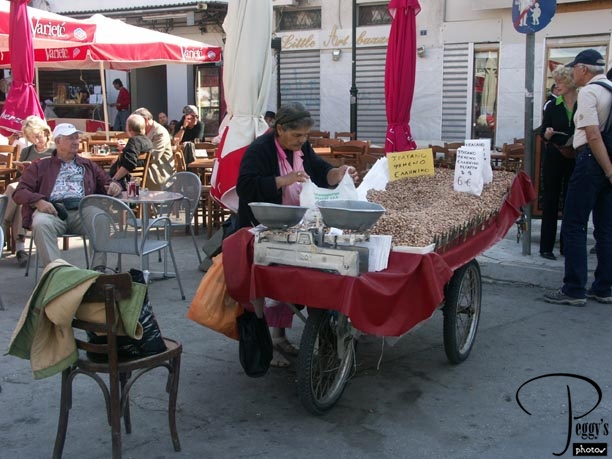
Nuts.

For Sale in Plateia Monastirakou
For Sale in Plateia Monastirakou
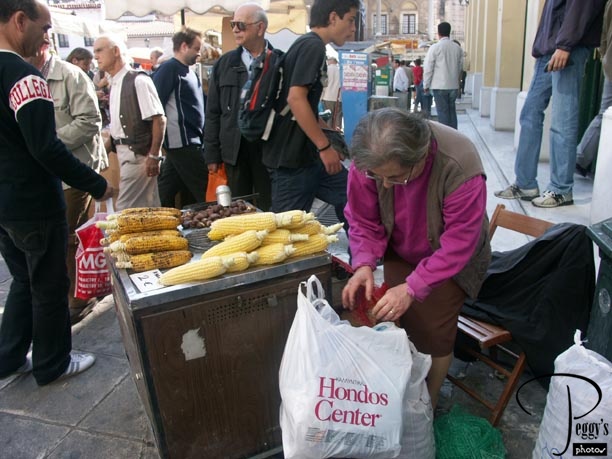
Roasted corn and chestnuts.

For Sale in Plateia Monastirakou
For Sale in Plateia Monastirakou
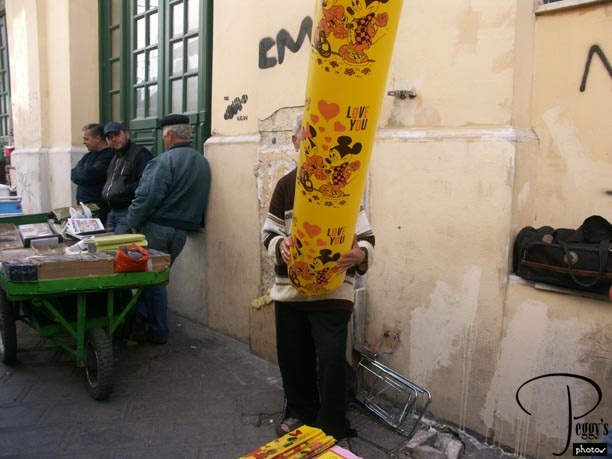
Miscellaneous items and balloons.

For Sale in Plateia Monastirakou
Going into the Main Monastirakou Flea Market
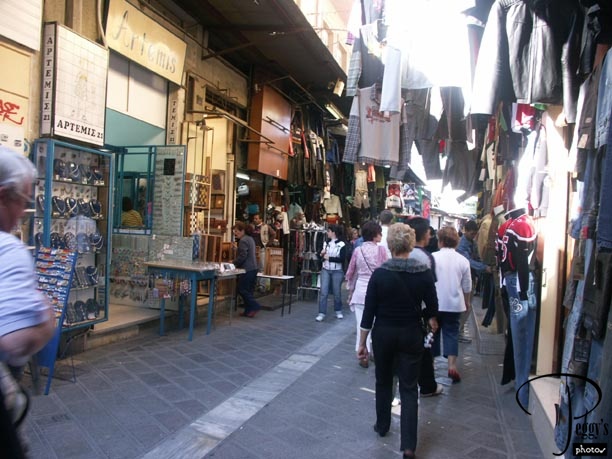
Street into the main flea market. The Monastirakou Flea Market is open every day of the week as there are permanent stores in it, but on Sunday, it has the most vendors in it. The street was very crowded. Don’t forget to bargain here.

Going into the Main Monastirakou Flea Market
For Sale in the Flea Market

Army gear.

For Sale in the Flea Market
For Sale in the Flea Market
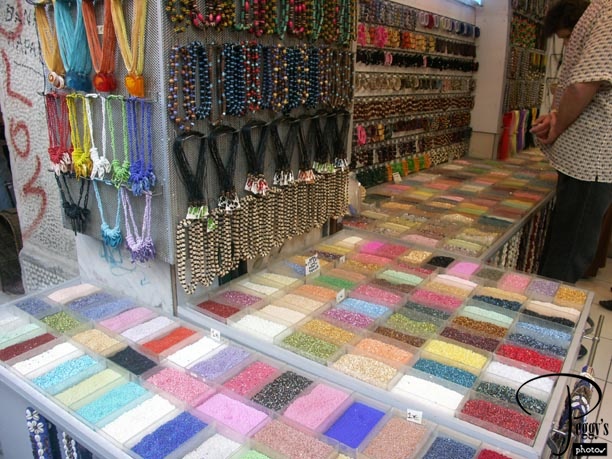
Beads to make your own necklaces.

For Sale in the Flea Market
For Sale in the Flea Market
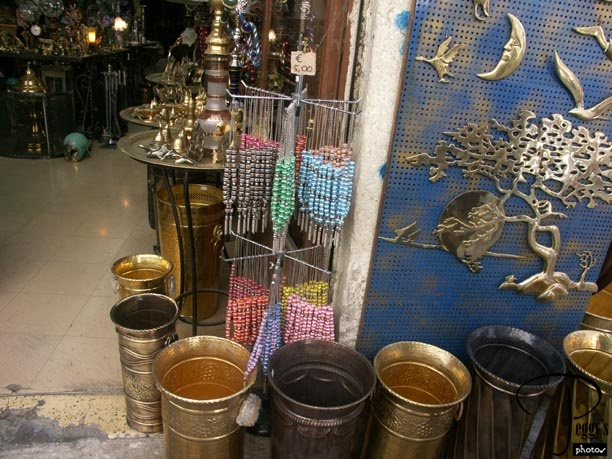
Worry beads and brass.

For Sale in the Flea Market
For Sale in the Flea Market
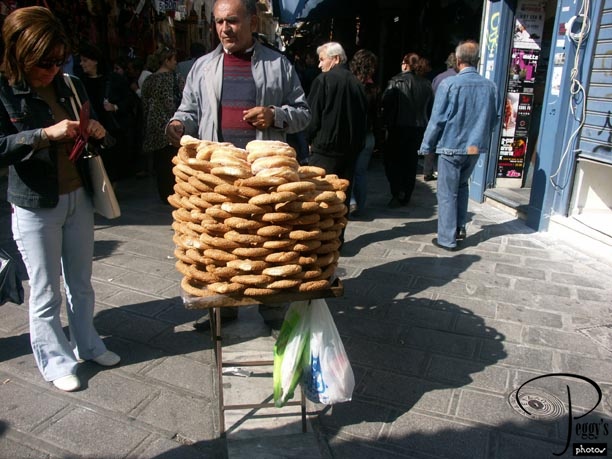
Rolls and donuts.

For Sale in the Flea Market
For Sale in the Flea Market
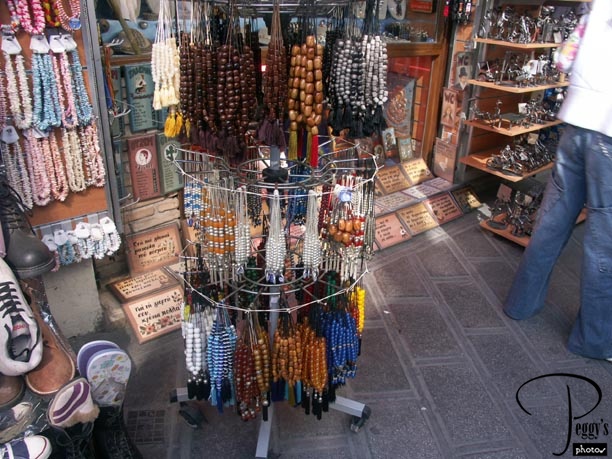
More worry beads.

For Sale in the Flea Market
For Sale in the Flea Market
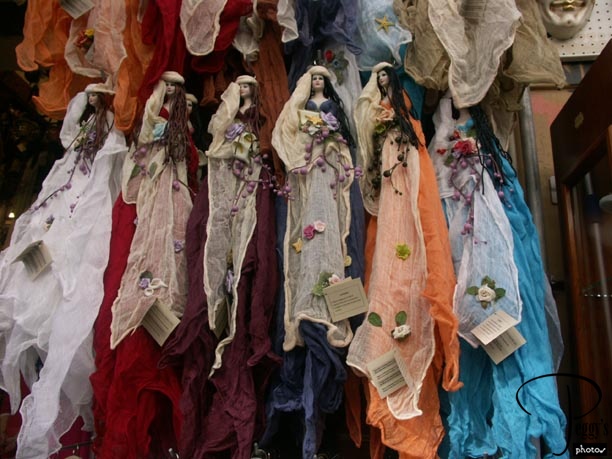
Reaping dolls. These dolls represent the nymphs, goddesses, and muses of Greek Mythology.

For Sale in the Flea Market
For Sale in the Flea Market
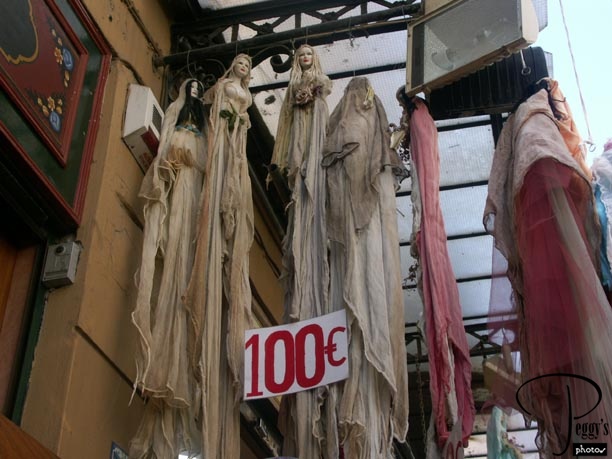
More of these reaping dolls.

For Sale in the Flea Market
For Sale in the Flea Market
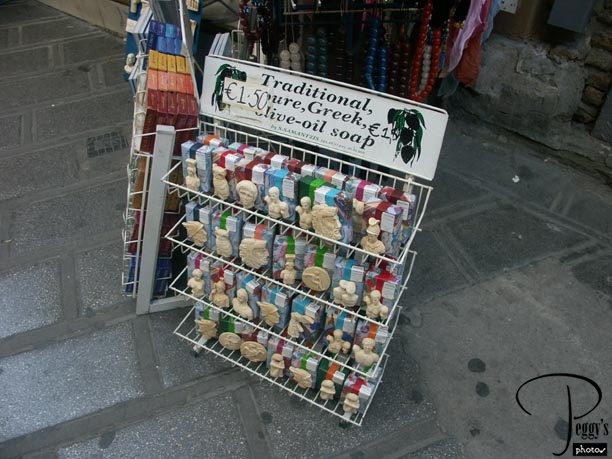
Olive oil soap.

For Sale in the Flea Market
For Sale in the Flea Market
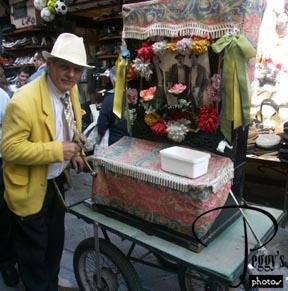
The organ grinder asks for money to play a song (and also to take his photo).

For Sale in the Flea Market
For Sale in the Flea Market
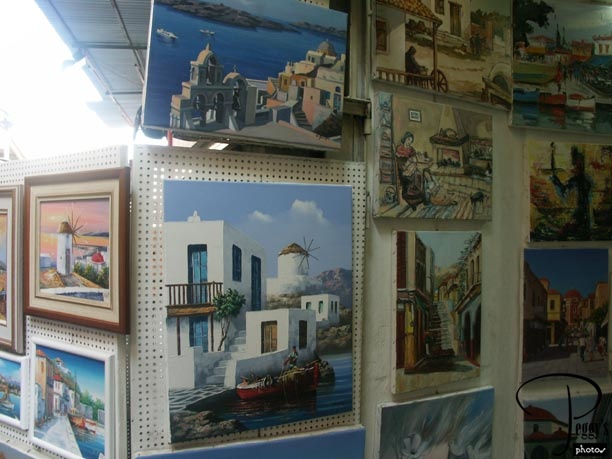
Paintings of the Greek Islands.

For Sale in the Flea Market
For Sale in the Flea Market
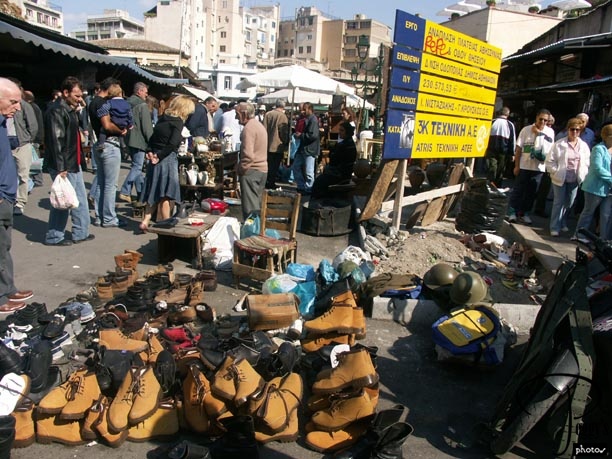
Shoes and antiques.

For Sale in the Flea Market
For Sale in the Flea Market
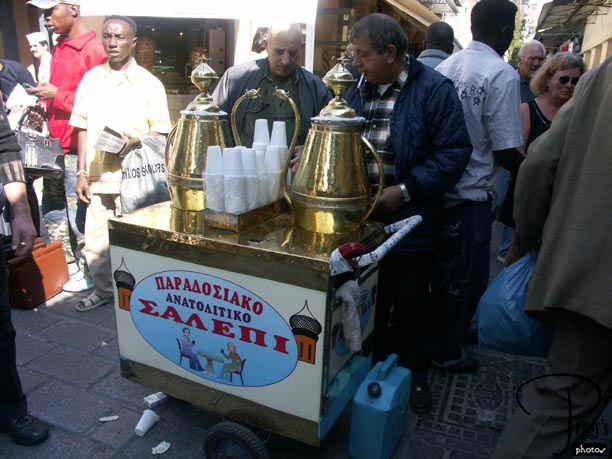
Coffee. Re: the cigarette hanging out of the vendor’s mouth. The Greeks are great smokers, perhaps even more so than either the French or the Belgians.

For Sale in the Flea Market
Tzistarakis Mosque
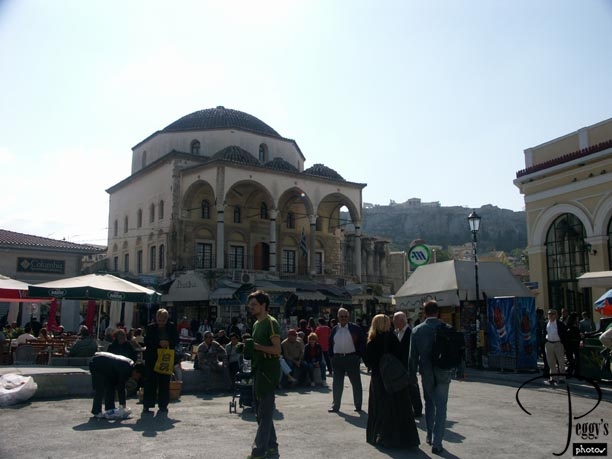
I walked back through the Flea Market street to Plateia Monastirakou. The Tzistarakis Mosque is across from the Pantanassa Church. It was built in 1789 by Athens’ Turkish government and it is the only Ottoman–era mosque open to the public in Athens. Today, it houses the Museum of Traditional Greek Ceramics, ceramics mainly from the second half of the 20th century.

Tzistarakis Mosque
Tzistarakis Mosque
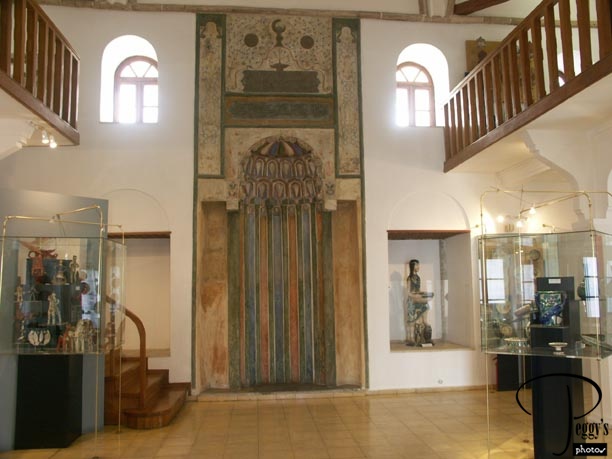
I enjoyed seeing the ceramic collection. No photos were allowed in the mosque/museum, but I asked if I could take this photo of the old mosque frescoes.

Tzistarakis Mosque
Hadrian’s Library
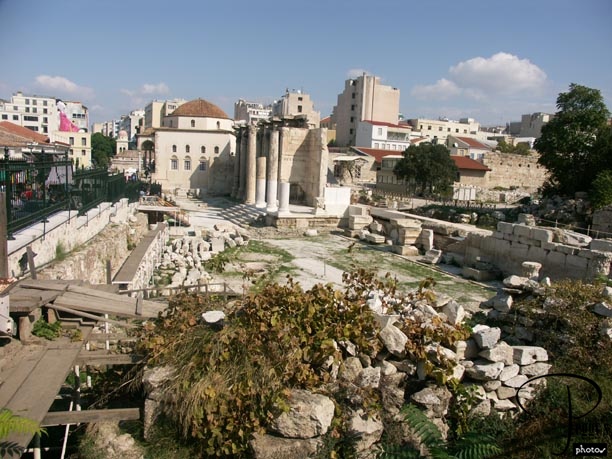
The ruins of Hadrian’s Library are right next to the Tzistarakis Mosque. The library was built in 132 AD by the Roman Emperor Hadrian. It had a marble courtyard with gardens and a pool. It also had lecture rooms, a theatre, music rooms, etc.

Hadrian’s Library
Hadrian’s Library
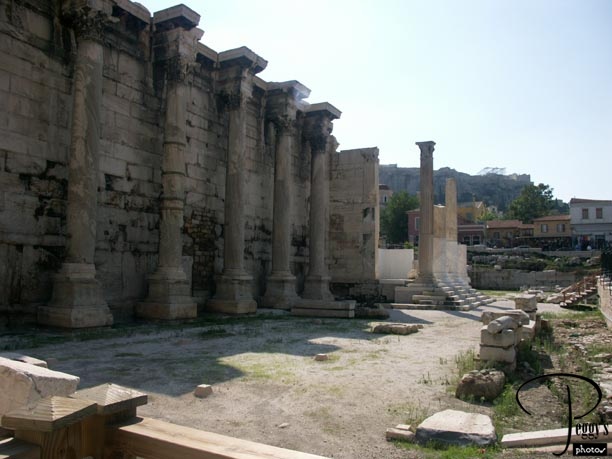
View of Hadrian’s Library from the side.

Hadrian’s Library
Hadrian’s Library
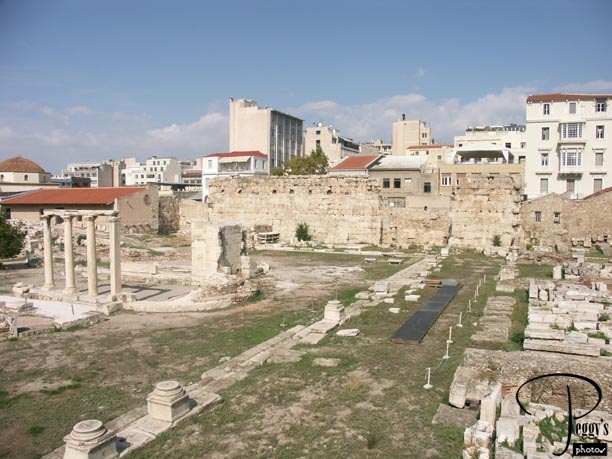
Another view from the side. The mosque in the photo is the Tzistarakis Mosque.

Hadrian’s Library
Hadrian’s Library
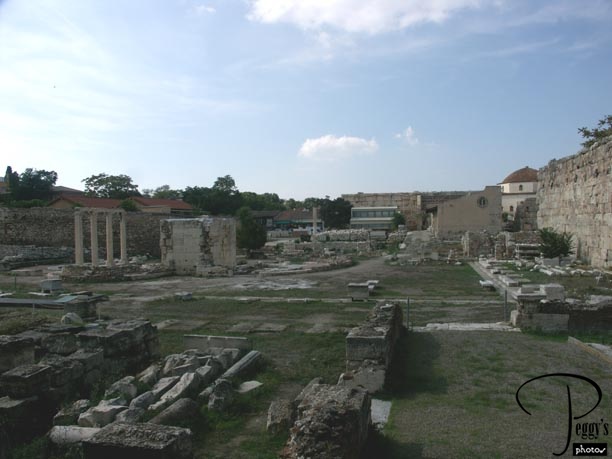
Another view of Hadrian’s Library.

Hadrian’s Library
Tower of the Winds
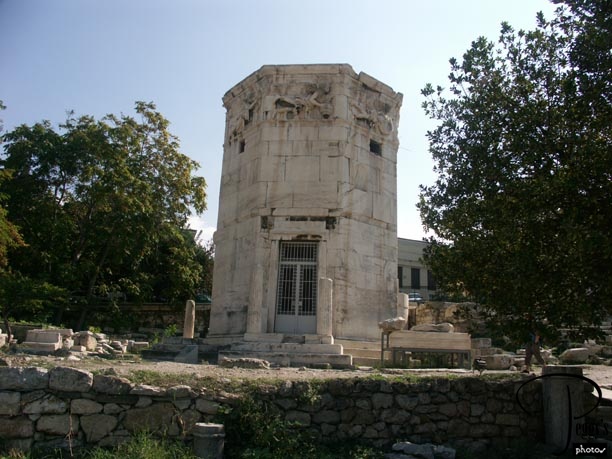
Up the hill from Hadrian’s Library is the Tower of the Winds, another Roman ruin, which is located in the ruins of the Roman Agora. The Tower of the Winds was built in 50 BC as a weather vane and water clock.

Tower of the Winds
Tower of the Winds
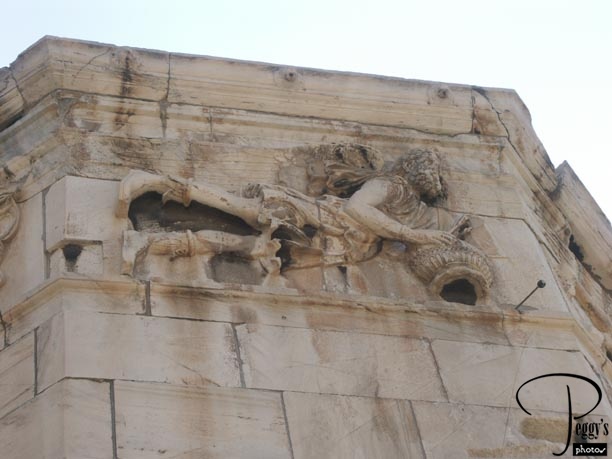
The friezes on the top of the tower personify the winds. This frieze is of Skiron, who is scattering glowing ashes from a bronze vessel.

Tower of the Winds
Tower of the Winds
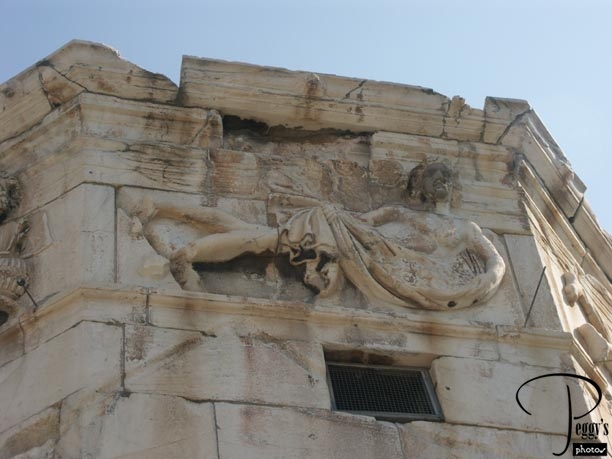
This is of Zephros, a semi–naked youth scattering flowers.

Tower of the Winds
Tower of the Winds
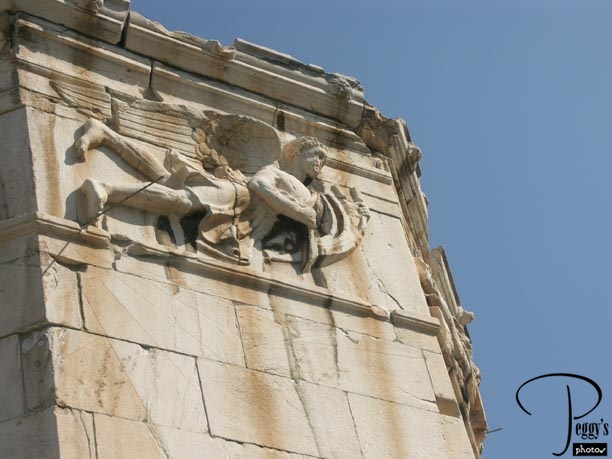
Lips, who is holding a stern ornament (an apblaston) of a ship as he steers.

Tower of the Winds
Roman Agora
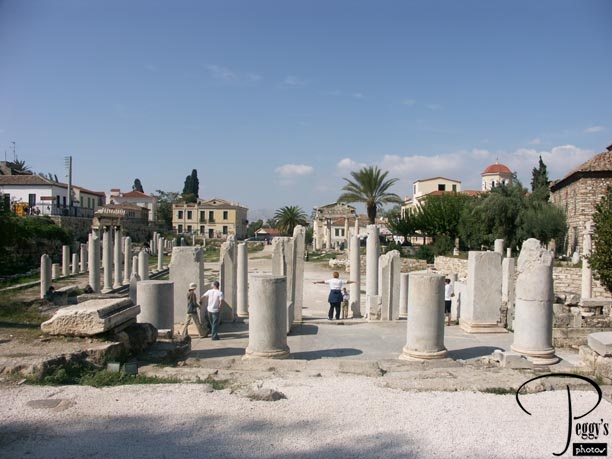
View of the ruins of the Roman Agora, sometimes called the Roman Forum. The main Athens marketplace was moved by the Romans from the Ancient Agora about 150 AD.

Roman Agora
Roman Agora
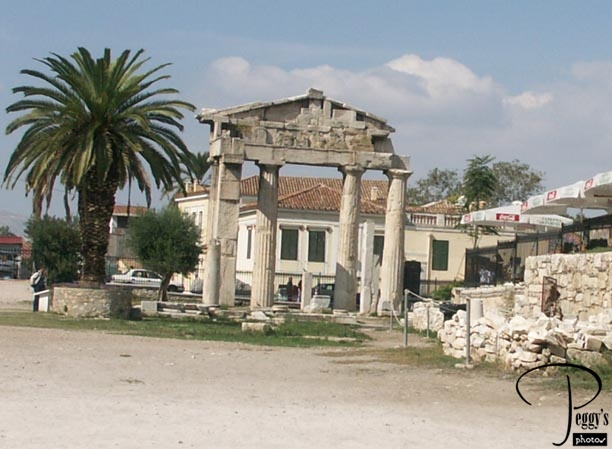
The gate leading to the Roman Agora.

Roman Agora
Roman Agora
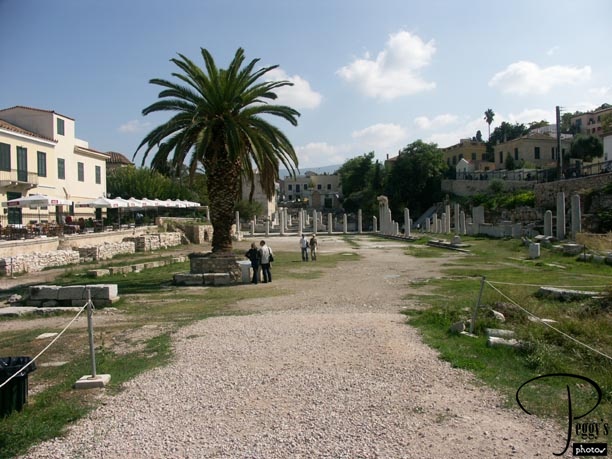
Looking back to the Tower of the Wind.

Roman Agora
Roman Agora
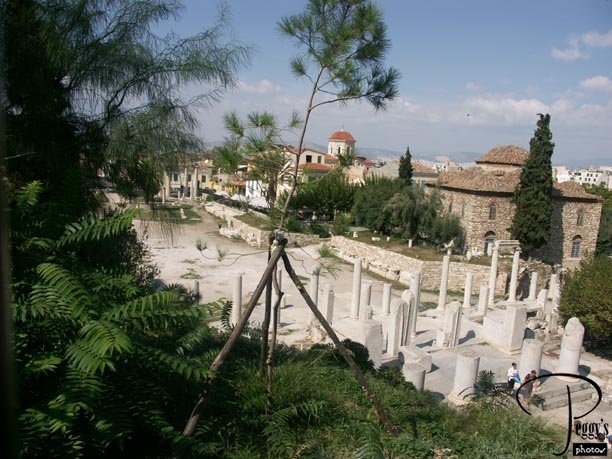
View of the Roman Agora from above. The mosque in the front of the photo is the Fethiye Mosque, which was built by the Turks in the 15th century. In a very small area of Monastiraki, it is quite amazing to see Roman ruins, Turkish mosques, and Greek Orthodox churches, all from different periods of the history of Athens. If you just cross the street from the Flea Market, there are also the Greek ruins of the Ancient Agora.

Roman Agora
Turkish Baths
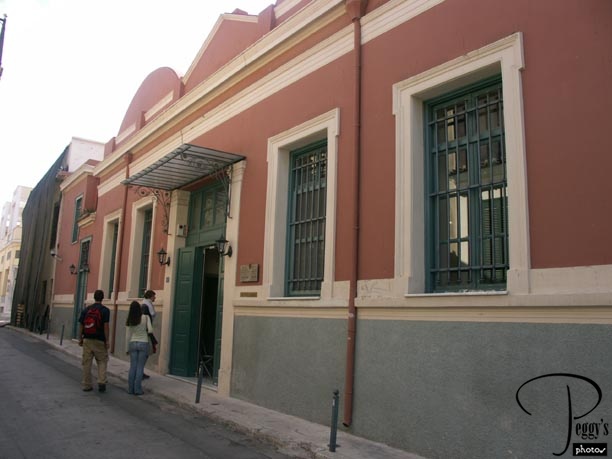
A little bit up the hill from the Tower of the Winds are the only Turkish baths left in Athens––all the other baths were destroyed after the Greeks won independence from the Turks. Under Turkish rule, every Athens neighborhood had a Turkish bath. They were not only for bathing, but also served as social meeting places. This building houses the remaining Turkish bath.

Turkish Baths
Turkish Baths
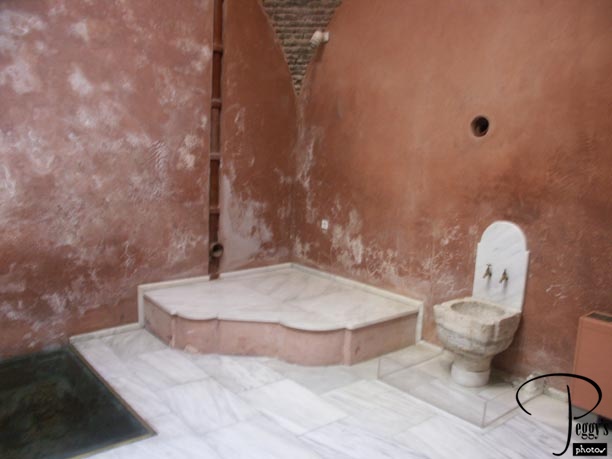
Inside the Turkish Baths. One of the changing rooms. Most of the rooms inside the Turkish Baths were similar to this one.

Turkish Baths
More Restaurants
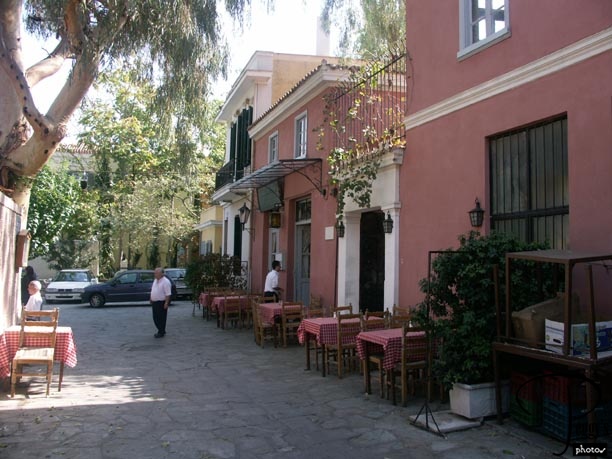
On the street right before the Turkish Baths, I saw a very nice restaurant area. I think that the Monastiraki and Plaka (which runs into Monastiraki) areas must contain hundreds of restaurants, coffee bars, and tavernas, with some of them so hidden away that they are only known to the citizens of Athens or to those tourists who just happen upon them.

More Restaurants
Kapnikareas Church
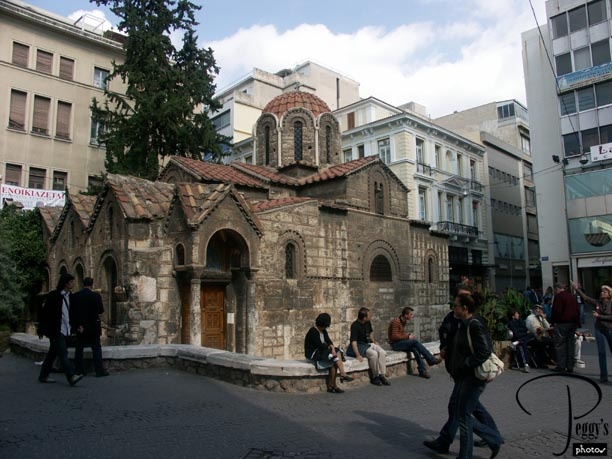
The last thing on my list of what to see today was the Lysikrates Monument in the Plaka area. According to my map, it was an easy walk from Monasteraki to the Plaka. However, I must have taken a wrong turn (very easy to do as the street signs are on the sides of the buildings, streets curve around and change names, and some streets end abruptly). But I didn’t get lost as I found that I was just retracing the route that I had taken that morning to Monastiraki. I passed the Kapnikareas Church on my way. It is situated right in the middle of a car–allowed square between high–rise buildings. It was built in the 11th century over the ruins of a ancient temple dedicated to a goddess. Kapnikareas Church is dedicated to the Virgin Mary

Kapnikareas Church
Kapnikareas Church
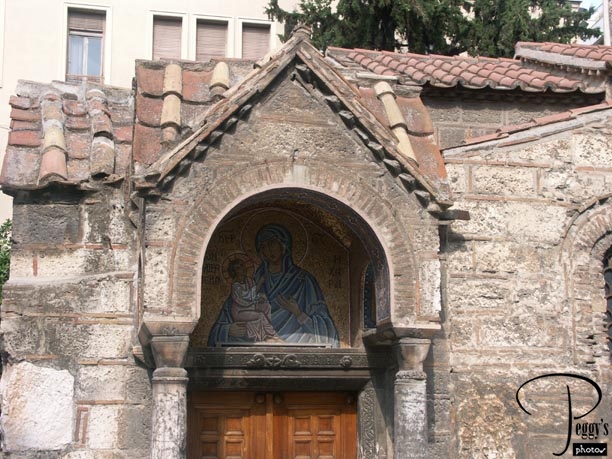
Fresco on the outside of Kapnikareas Church.

Kapnikareas Church
Hard Rock Cafe
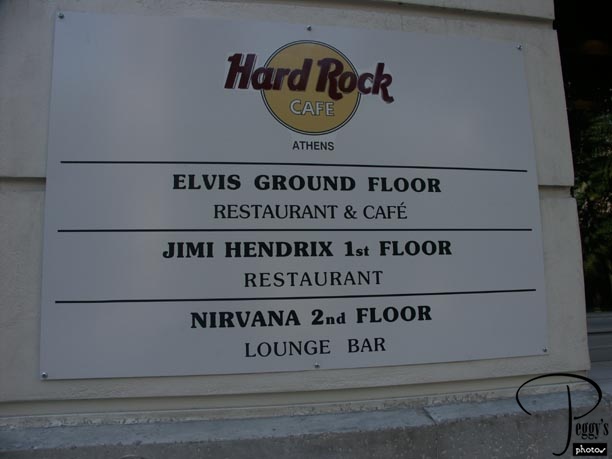
By this time I needed a break from the noise of Athens, mainly from its cars and its uncountable number of cycles, and also a break from the crowds of people out on a Sunday. I took refuge at the Hard Rock Cafe, located in a nondescript building. I sat at a counter on the Elvis Floor, ordered a hot fudge sundae and a cappuccino, and was blasted by extremely loud American rock music (they didn’t only play Elvis’ music). It worked. When I went back onto a very busy Athens street, everything seemed so very quiet.

Hard Rock Cafe
Lysikrates Monument
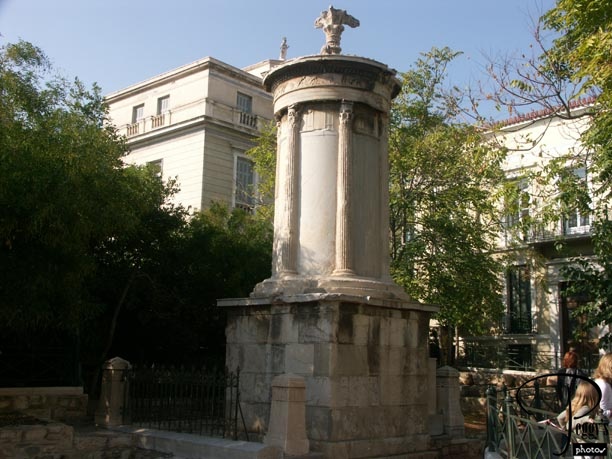
I did finally find the Lysikrates Monument. It is the only intact choregic monument in Athens and dates back to 334 BC. The rich sponsors of the teams of actors and singers competing in the choral and dramatic festivals in the Theatre of Dionysos were called choregos (hence, the word choregic). They built monuments if their teams were victorous.

Lysikrates Monument
Plateia Lysikratous
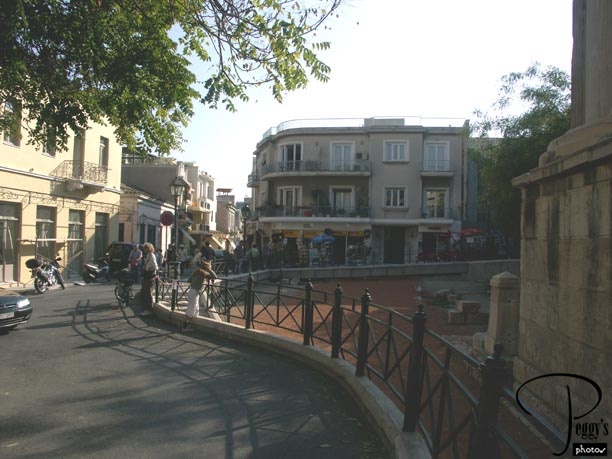
The square next to the Lysikrates Monument. If I had consulted my map, I would have discovered that all I needed to do to quickly get back to my hotel was to follow the street in the photo.

Plateia Lysikratous
More Restaurants
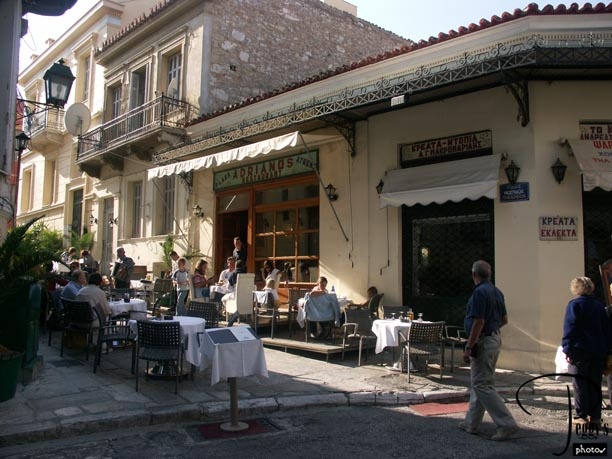
However, I took a longer, more familar route back to my hotel and passed even more hidden restaurants. I didn’t go out for dinner that night as I wasn’t very hungry but was very very tired. A long, very good day.
